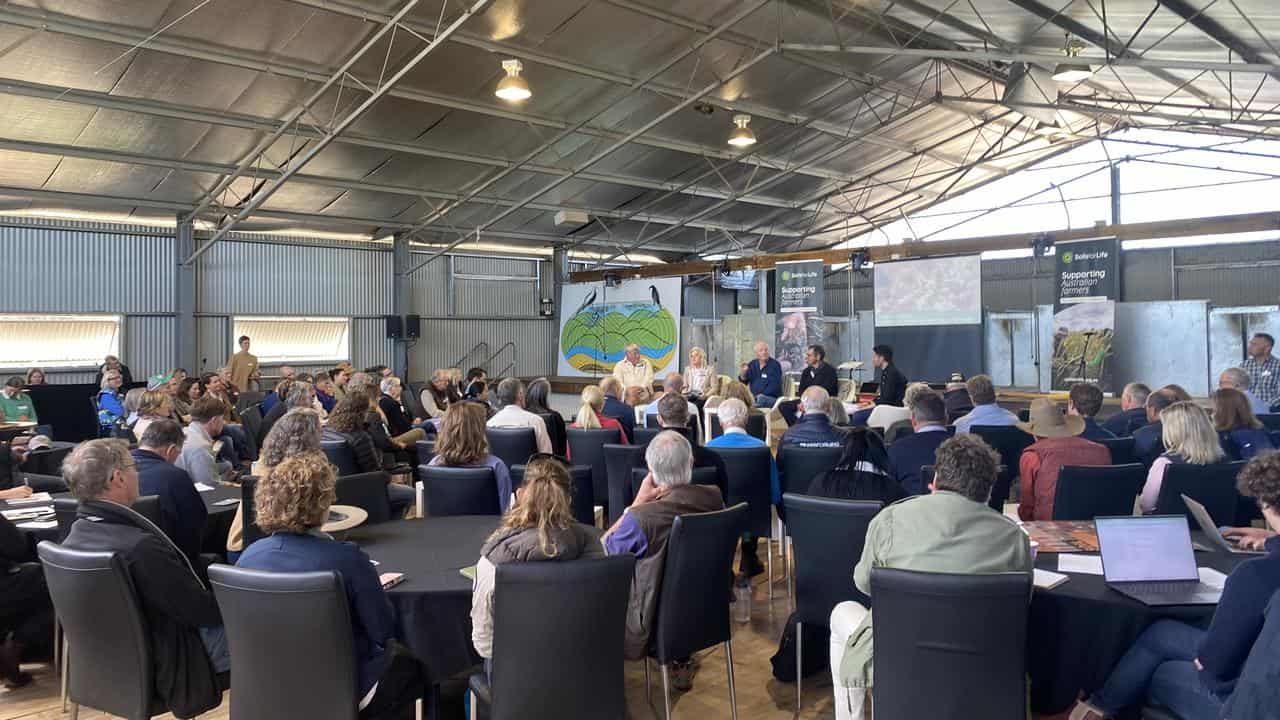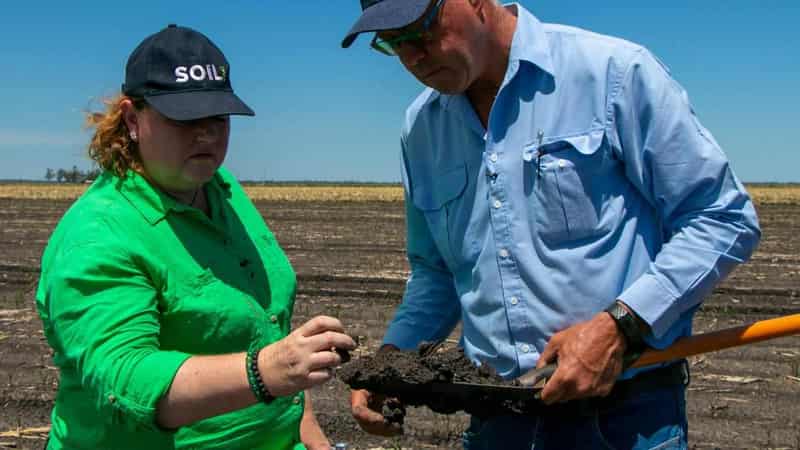
Regenerative agriculture is gaining traction among farmers, a soils summit in regional NSW has been told.
Dozens of farmers have gathered for the two-day Soil Stewardship Summit near Yass to talk about how they implement healthy soil practices.
Obstacles facing croppers looking to build soil health have been in focus at the summit.
Croppers Di and Ian Haggerty run 26,000 hectares across several properties in the Western Australian wheatbelt where they adopted regenerative practices in 2001.
Ms Haggerty says regenerative agriculture is starting to gain traction across the cropping sector.
"There are a lot of younger people coming into the room which is fantastic. So I think people are trying different things and starting to have some courage to have a go at different things," she told AAP.
Eli Court from non-profit Soils for Life said regenerative agriculture has moved from the fringes to the minds of mainstream producers.
"Soil is now recognised as an issue of national significance," he told the conference.
Mr Court told AAP a lot more farmers are curious about how they can build and improve their soil and landscape health.
"Regenerative agriculture is all about working with rather than against nature in farming systems," he said.
"It means finding practices that will keep improving the soil and the land so that we can reduce reliance on inputs that are costly and damaging to the soil."
Queensland seed producer Russell Young travelled from Dalby on the Western Downs.
"We're going to play with the things that will allow us to still maintain profitability," he told the conference.
The third-generation farmer has been using regenerative agricultural practices across his 850-hectare property since 2018, and said his input costs had dropped 10 per cent.
He wants to share with other producers how easy it can be to use some regenerative practices, but warns the process is not quick.
"You've just got to believe in the process, it will take time, you don't turn around 70 years of bad behaviour within five minutes," he said.
"You've got to be sensible about the changes you make ... there's no point in making silly decisions and going broke."
The conference was told some of the producers had adapted to regenerative agriculture practices after hitting a tipping point.
Tasmanian farmer Sam Trethewey said he had built a regenerative supply chain after having a penny-drop moment prompting him "to get out of mother nature's way and let the farm do its thing".
Stuart Austin from the Wilmot Cattle Company told the audience he had noticed a shift in interest in regenerative agriculture among producers.
"There's this growing momentum of people coming towards a different way of thinking of their own volition, which is really exciting to see," he said.

Victorian seed farmer Grant Sims has moved away from insecticides and pesticides and reduced the amount of fertiliser across 3400 hectares, because the chemicals "didn't gel with him".
He told the audience plants become "sooks" and reliant on chemicals, and he wanted to improve the health of the soil.
"We can essentially grow more nutrient-dense food, fix more carbon and be more strategic with our inputs and manage them and be more profitable," Mr Sims said.
"We started seeing worms and spiders and stuff coming back.
"Instead of trying to kill things, we try and make things grow better ... we use healthy microbes to beat the bad guys instead of just killing it all."
This AAP article was made possible with the support of Soils for Life.









